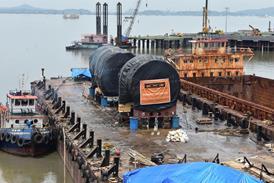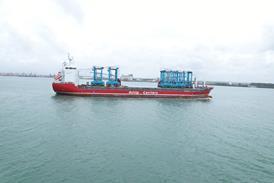According to Drewry Maritime Research, the economics suggest that the multipurpose (MPV) shipping sector should be performing much better than it actually is. Demand growth has been steady, outstripping the supply of new vessels. However, own
Drewry says there is a strong correlation between global general cargo growth and GDP growth. However, a significant slowdown in the former was seen in 2017.
In 2016, global general cargo recorded growth of 2.5 percent (compared to 2015) but this dropped to 1.2 percent year-on-year for 2017. Drewry suggests the MPV sector was squeezed by significant container (5.4 percent) and bulk (3.8 percent) growth.
The International Monetary Fund's (IMF) October report said economic activity continues to strengthen with global GDP for 2017 and 2018 up 0.1 percent to 3.6 percent and 3.7 percent, respectively. Meanwhile, trade volume (goods and services) has also improved, with growth of 4.2 percent expected in 2017 and 4 percent in 2018.
Drewry's forecast for global dry cargo demand (until the end of 2019) is an average 3 percent growth, per year. Within this figure, it expects container growth to remain very strong at over 4 percent and dry bulk at 2.5 percent. This slight easing from the competing sectors, leads Drewry to predict that general cargo volumes and the MPV share of the market will improve over the next few years.
Figure 1

Estimated development of General cargo market (million tonnes). Source: Drewry Maritime Research
Drewry added that the Purchasing Managers' Index (PMI), which it considers a driver of project cargo, recorded global services output expanding for its hundredth consecutive month in November 2017. This, along with renewed investment, should improve the MPV sector in the medium term.
The scenario outlined above leads Drewry to predict an MPV market share growth of rate of 1 percent annually, through to end 2019.
However, Drewry points out that aggressive competition for non-containerised general cargo from MPVs, containerships, Handysize bulk carriers, ro-ros and PCTCs effectively overbalance the supply side of the market equation and keep rates low.
Although Drewry expects both container and bulk rates to improve over the course of 2018, it may take some time before they are strong enough to make the breakbulk/project cargo rates less attractive.
Figure 2

Suggested development of the MPV fleet ('000 dwt). Source: Drewry Maritime Research
The make-up of the MPV fleet also places a burden on rates. There are a large number of overage vessels with little or no lift capacity, which are competing with a host of small general cargo vessels or old bulk carriers for parcels of cheap breakbulk commodities. Until demolition prices or increased adherence to the latest IMO directives make these vessels financially unviable, they will continue to drag the market down.
However, Drewry's overall expectation of cargo demand growth is positive. There is significantly more potential for the fleet supply to correct and rates to start improving in the second half of 2018.















